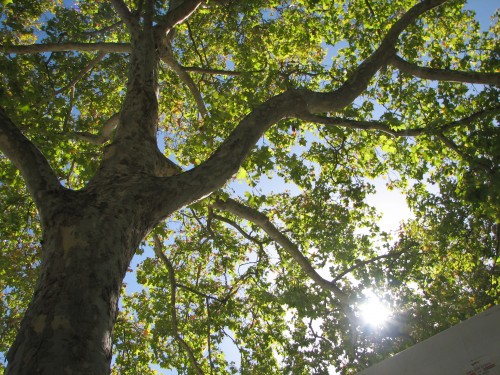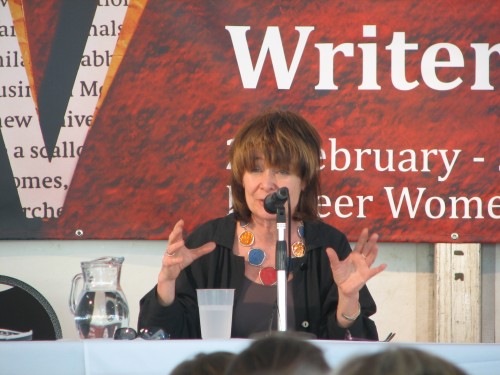Editing my novel
At long last I have returned to do some concentrated editing and rewriting of the children’s novel I wrote last year. This is the novel I am writing for my Master of Arts in Creative Writing degree. It is now in its 7th draft (and counting).
You can read about how I went about the process of writing it here, including some articles outlining some of the background research, some of the considerations I needed to address and some of the problems encountered.
I had attempted to complete the novel and hand it up for assessment late last year but illness got in the way. Continued illness has hindered my progress so far this year too. After a break of over three months I am finally in a position to make a run for the finish line.
At the moment I am going through my supervisor’s notes and making changes where necessary. In many cases this involves changing a few words here and there, eliminating unnecessary words and phrases (and some ponderous sentences) and paying close attention to punctuation. It is painstaking work but very necessary. Not only do I desire a good mark but I also want to impress a publisher so much that there is no option but to snap up my manuscript and publish it.
Today I have been looking at the first few chapters. I want them to be the very best I can do. In many cases you have to win over the editor and the reader in the first chapter – sometimes even in the first page.
Some writing hints:
- Pay close attention to all punctuation marks. Get it right.
- Get rid of unnecessary words.
- Eliminate anything which does not advance the plot.
- Vary the length of your sentences.
- Make the opening scenes and chapters memorable in order to hook the reader into turning the pages.
Good writing.
Inspiration and writing
From where for you draw your inspiration as a writer?
I guess there are as many answers to that question as there are writers! It always intrigues me when writers say that they don’t know what to write about. I rarely have that problem. I can see ideas for writing all around: in the every day events of life, in the experiences of life, in the environment, in the fascinating people we come into contact with daily, in the newspapers, in things we read, in films, television programmes and so on and so on. So writers just need to open their eyes to the whole world of ideas for writing out there just waiting for a poem, a story, an article or an essay to be written.
In recent weeks I have written about my impressions of attending this year’s Adelaide Writers’ Week held as a part of the current Festival of Arts. During one of the sessions I couldn’t find a seat in the big marquee, so I sat in the shade of one of the beautiful trees which are a feature of the Women’s Pioneer Memorial Gardens where the sessions were held. It was a lovely day: bright sunshine, not too hot, gentle breeze and wonderful speakers to enlighten and entertain us.
I looked up into the trees above.
Beautiful.
I just had to take several photos to share with you here. I will use these photos, and the wonderful setting, as inspiration for some writing. The only problem now is to decide whether I write an article, a short story, a poem – perhaps a beautiful sonnet – or a blog post about those lovely trees, the sunshine filtering softly through the leaves, the birds singing overhead in the branches or some other response.
Be inspired – and use that for good writing.
How to write a pantoum poem
Yesterday I wrote about how I write poetry.
It’s a simple formula and one that usually works for me. My only regret is that I far too often either don’t have the time to devote to poetry – or I don’t make the time. As a prize winning poet I know I should be writing more.
The regular monthly poetry writers’ group I attend is one thing that keeps me writing poetry on a regular basis. Each month we set a writing challenge for the following meeting. Some of the challenges last year were really inspiring, and hearing everyone’s take on the one challenge is very interesting. The critiquing of each poem is also valuable. There are many benefits to belonging to a writers’ group.
In this coming month we were set the task of writing a pantoum on the theme of obsession. Now, I’ve never written a pantoum and have resisted doing so until now. I thought it was too hard, too complex. I was wrong. A few days ago I managed to write a pantoum called Obsessed by Sonnets. That’s right – I wrote a pantoum about writing sonnets! Go figure.
What is a pantoum?
Good question.
It is a poem of Malay origins and has undergone a few adaptations on its way into English poetry circles via the French. Essentially it consists of the following:
- A set of four lined stanzas (quatrains) – anything from three stanzas and up.
- It has a simple abab rhyming pattern throughout.
- It is often metred but I believe that this is not a strict rule. However, metred poems always sound wonderful when read aloud.
- Lines are repeated in a strict pattern.
- Lines 2 and 4 of the each stanza become 1st and 3rd lines of the next stanza. This is repeated throughout the poem until the last stanza.
- In the last stanza, the so far unrepeated 1st and 3rd lines of the first stanza become the 2nd and 4th lines – but in reverse order. This means the poem comes full circle and the last line is a repeat of the first line of the poem. This gives the whole work a very satisfying feel to it.
I’ll now be very brave and publish here a pantoum I wrote this afternoon. Note that a few words here and there have been changed to make grammatical or narrative sense.
What is a pantoum?
A pantoum is challenging to write,
It’s a poem of elegance and grace.
With stanzas of four lines – that’s right –
And a rhyming pattern to face.
It’s a poem of elegance and grace,
With quatrains for stanzas I’m sure,
And a rhyming pattern to face,
Not to mention a message that’s pure.
With quatrains for stanzas I’m sure,
And a metre so regular too,
I won’t mention my message so pure,
For I’m planning to entertain you.
It’s my metre that’s regular too,
With stanzas of four lines – that’s right –
For I’m planning to entertain you
With a pantoum that’s challenging to write.
All rights reserved.
Copyright 2010 Trevor Hampel.
How I write poetry
Writing poetry has been a love of mine from my very early years. I was barely a teenager before I started writing poetry seriously. Back then it was a haphazard affair with no real plan or purpose. Most were scribbled furiously on to any convenient scarp of paper and stored ungraciously in boxes or drawers.
In my 20s I started to be a little more methodical and I started using a manual typewriter to make neat, readable copies of them. These were stored in folders. Fortunately I usually date each poem, so it was relatively easy to store them all in chronological order of composition.
Four decades later it is a different matter. I am far more deliberate in my approach to writing poetry. Several of the units of course work for my Master of Arts in Creative Writing have involved writing poetry. Being an active member of the university’s writers’ groups has also given a boost to my poetry. Some of the assignments have been very challenging. Before starting the course I had never attempted to write a sonnet, for example. Now I’ve written prize winning sonnets and love the form. In the last few years I also started getting some publishing success with my poetry. It’s early days in my career as a poet, but the signs are encouraging.
How I write a poem
- Most of the time I use a pencil. There is something wonderfully tactile about using a pencil on paper. It certainly helps the creative process when writing a poem. By way of contrast I always write prose on the computer keyboard. I can’t ever remember writing a poem on the keyboard.
- I usually write the first draft of a new poem in my writing notebook first. This is a spiral bound A5 size notebook with hard covers.
- I decide on the topic (unless it has been decided by the writers’ group) and play around with the idea, jotting down a few words, phrases and ideas.
- I think about what form the poem should take to be most effective: sonnet, blank verse, haiku and so on. The form often determines the rhyming scheme (if any) and metre that best suits the topic.
- I always try to have a strong opening line and will experiment until I can settle on one. The whole poem often grows from that good first line. It sets the tone.
- During the writing I will have many false starts, words, phrases and even whole stanzas that never make the final work. My notebook can end up quite a mess, with many sections crossed out, arrows leading everywhere as I rearrange the work.
- Reading the poem out aloud is an important part of my method; it has to sound right, and the metre has to work.
- After much editing, rewriting and correcting, I finally turn to the computer and compose it on screen. I will try several different formatting ideas before settling on something that looks pleasing to the eye and is easy to read.
- I will reread the poem aloud many more times, making minor corrections on screen as needed.
- I print out a copy and file it away in a poetry folder. It may be many months before I come back to that poem, do a few more minor alterations and submit it to a publisher.
Good writing.



